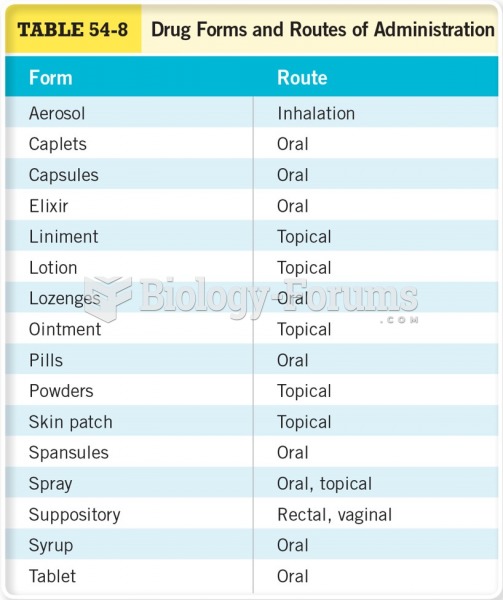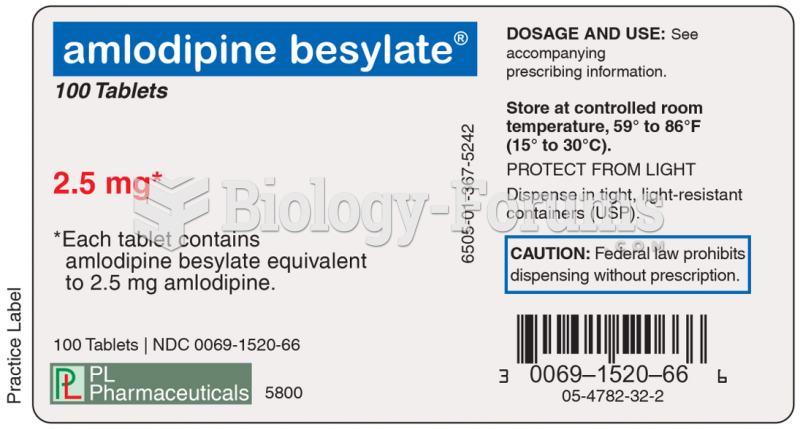|
|
|
Approximately 500,000 babies are born each year in the United States to teenage mothers.
After 5 years of being diagnosed with rheumatoid arthritis, one every three patients will no longer be able to work.
Cytomegalovirus affects nearly the same amount of newborns every year as Down syndrome.
Children with strabismus (crossed eyes) can be treated. They are not able to outgrow this condition on their own, but with help, it can be more easily corrected at a younger age. It is important for infants to have eye examinations as early as possible in their development and then another at age 2 years.
Amoebae are the simplest type of protozoans, and are characterized by a feeding and dividing trophozoite stage that moves by temporary extensions called pseudopodia or false feet.





